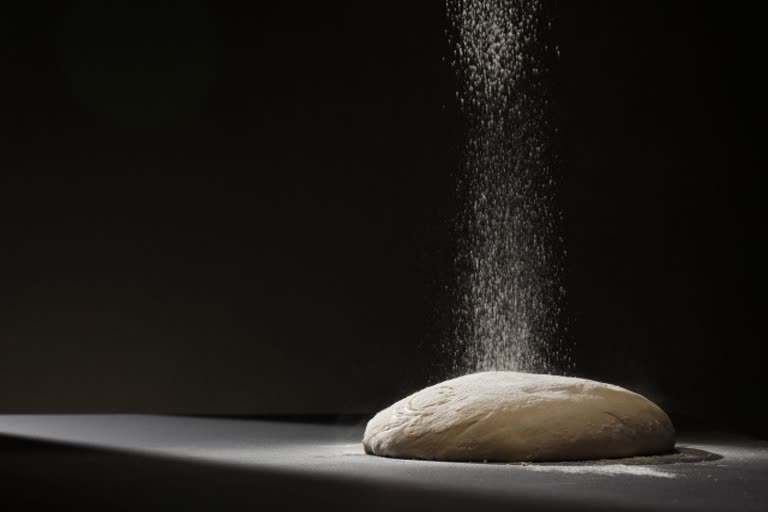Millet grew wild in Africa for centuries before being cultivated by man. In addition to being nutrient-rich, it grows well in cold, arid regions and can be harvested within 70 days of planting. While it has been primarily cultivated in Africa, Asia, and Europe, it has become a staple in many diets around the world
A cup of cooked millet provides approximately 207 calories, 6 grams of protein, 2 grams of dietary fiber, and less than 2 grams of fat along with plenty of minerals and vitamins.
The different millet flours are:
Ragi/Nachni/Finger millet flour:
If you are looking for healthy flour, for your physical as well as mental well-being, then Ragi flour is a perfectly healthy choice. Ragi (Nachni) also known as finger millet is a wonder grain that is a storehouse of calcium, iron, magnesium, potassium, niacin, thiamine, and amino acids. This wonder flour helps repair muscles treat anemia and control diabetes.
It is mostly used in making chapatti, dosa, cookies, biscuits. It is often mixed with whole wheat flour to accentuate the taste and health quotient of the chapatti.
Jowar/Sorghum flour:
Jowar flour also known as sorghum flour has a nutty taste that gives the delicacies a perfect taste. Enriched with the goodness of Vitamin B12, Thiamine, vitamin A, phosphorus, calcium, protein, and fiber content, this flour helps regulate blood flow, cell growth, and hair growth. It is good for diabetics and helps improving digestion and relieves constipation. Jowar is naturally gluten-free hence, it makes a great alternative for people with gluten intolerance.
Pearl millet/Bajra flour:
A nutty-flavored flour, common in areas with high temperatures, Bajra is a powerhouse of vitamins and minerals. Bajra Atta also known as pearl millet is filled with nutrients like protein, magnesium, iron, phosphorous, and fiber. It is also a rich source of vitamin E, vitamin B complex, niacin, thiamine and riboflavin.
It is recommended for people with heart complaints as it lowers cholesterol and blood pressure.
Bajra flour can be a bit drying hence, it is suggested to add ghee on the top.
Amaranth/Rajgira flour:
Rajgira is a seed that is considered a pseudo-cereal in western countries. But in India, it’s not considered a grain. That’s why Rajgira flour is ideal during fasting where strictly non-cereal foods are allowed.
It is a powerhouse of protein, calcium, iron, zinc, magnesium, phosphorus, potassium, and vitamin C that help prevent several chronic health conditions such as heart disease, cancer, and stroke. It is also helpful in treating inflammatory issues like arthritis.
Many Indian households prepare millet flour at home. While making flour from millet grains a few points must be noted.
Millets must be soaked overnight or for 5-6 hours to neutralize the phytic acid and release the enzyme inhibitors. This makes the nutrients easier to absorb and digest. After soaking, they need to be dried in sunlight, and once completely dried, they can be ground into fine powder.
Another way to enhance the nutrient value of the millet flours is by soaking the flour in buttermilk or curds. This process helps to break down fiber and anti-nutrients. Also, the combination of millet and curds/ buttermilk act as a prebiotic and probiotic that improves gut health and helps in the treatment of several gastrointestinal diseases.
Millets are usually to be consumed as per seasonal changes. The ideal winter millets are finger millet and pearl millet whereas sorghum, barley, and little millet make great summer foods.
Also Read: Know Your Flour And Its Nutritional Value.
Being rich in protein, iron, calcium, and fiber, millets are a wonder food for children. Millets keep the colon hydrated thus preventing constipation in children and are rich in prebiotics which helps keep their gut healthy. The high magnesium content in millets helps in muscle coordination and proper neuromuscular functions.
Millets are gluten-free but contain small amounts of goitrogen – a substance that interferes with thyroid activity and may produce goiter if consumed in large quantities.
Also, as most millets are high in protein and potassium content, patients suffering from any kidney diseases must consume millet flour as per the doctor/nutritionist's advice.



